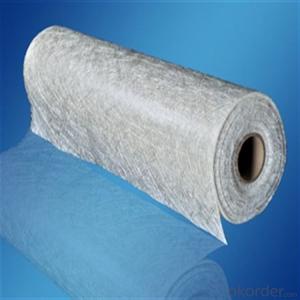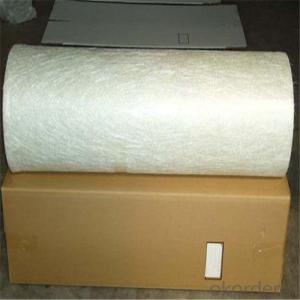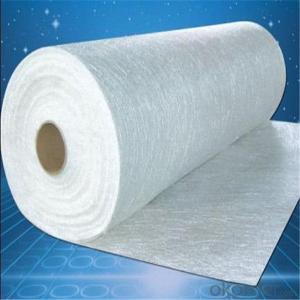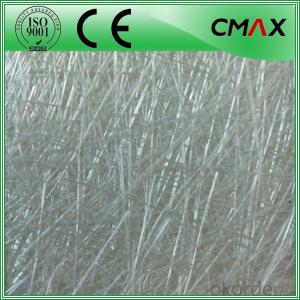Nordstrand 2024 AR Chopped Strand Fiberglass Mat Cloth in China
- Loading Port:
- Tianjin
- Payment Terms:
- TT OR LC
- Min Order Qty:
- 100 m.t.
- Supply Capability:
- 20000 m.t./month
OKorder Service Pledge
OKorder Financial Service
You Might Also Like
Quick Details
| Place of Origin: | Hebei, China (Mainland) | Brand Name: | Yuniu | Model Number: | thermoplastic Chopped Strands |
| Application: | thermoplastic | Surface Treatment: | silane | Technique: | chopping |
| Length: | 3-22mm | Quality: | Perfect | Certificate: | ISO9001:2000 |
| Color: | White |
Packaging & Delivery
| Packaging Details: | bag, pallet |
| Delivery Detail: | 7 days after the payment |
Specifications
Glass fibre Chopped Strands for concrete are designed for reinforcing PP, PA,PET, PBT POM, PPS and PC
Glass fibre Chopped Strands mainly used in injection and compression molding processes and its typical end-use applications include automotive industry, home appliances, valves, pump housings, chemical corrosion resistance and sports apparatus.
Product Features
1.Good strand integrity, low static and good flowability;
2.Fast and uniform distribution in resins, good processing properties and good mechanical
properties of the end products;
3.Good bonding with resins. No fiber sticking out at the surface of the end products and aesthetic
appearance.
Technical parameters
Filament Diameter(%): ±10
Moisture Content(%): ≤0.10
Size Content(%): 0.75±0.20
Chop Length (mm): ±1.0
Chop ability(%): ≥98
Packaging
Glass fibre Chopped Strands can be packed in bulk bags, cardboard boxes or composite plastic woven bags;
Bulk bags can hold 500kg~1000kg each;
Cardboard boxes and composite plastic woven bags can hold 15kg~25kg each.
Storage
Unless otherwise specified, fiberglass products should be stored in a dry, cool and rain-proof area. It is recommended that the room temperature and humidity should be always maintained at 15-35,35%-65% respectively.
Picture
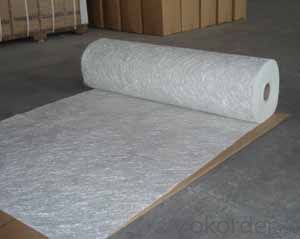



- Q: How is the impact resistance of fiberglass chopped strand composites tested?
- The impact resistance of fiberglass chopped strand composites is assessed through a variety of standardized testing methods. One commonly employed approach is the Charpy impact test, which measures the energy absorbed by the material when subjected to a sudden impact load. In this test, a notched composite specimen is secured horizontally and struck by a pendulum. The energy required to fracture the specimen is quantified and serves as an indicator of impact resistance. Another method employed is the Falling Dart test, wherein a weighted dart is dropped from a predetermined height onto a plate composed of the composite material. The height at which the dart fails to penetrate the plate is recorded and serves as a gauge of impact resistance. Furthermore, certain manufacturers may utilize drop weight tests or dynamic mechanical analysis (DMA) to evaluate the impact response of fiberglass chopped strand composites. These tests involve exposing the composite to controlled impacts or cyclic loading to determine its behavior under real-world impact conditions. In summary, the impact resistance of fiberglass chopped strand composites is determined through meticulously designed testing methods that replicate real-world scenarios. This ensures that the material can withstand sudden impacts without fracturing or incurring significant damage.
- Q: How does the length of the fiberglass chopped strand affect its performance?
- The performance of fiberglass chopped strand is significantly influenced by its length. In general, shorter strands yield better mechanical properties, including tensile strength, impact resistance, and dimensional stability. This is because shorter strands have the ability to disperse more evenly within the resin matrix, resulting in a higher ratio of fiber to resin and improved load transfer between the fibers. Furthermore, shorter strands facilitate better wet-out and impregnation of the resin, leading to enhanced adhesion and bonding between the fibers and the matrix. Consequently, this elevates the overall strength and stiffness of the composite material. On the contrary, longer strands are often more cost-effective and easier to handle during the processing stage. However, they may not offer the same level of mechanical properties as shorter strands. Additionally, longer strands can cause increased fiber entanglement and difficulties in achieving uniform fiber dispersion. In specific scenarios where flexibility or impact resistance is of utmost importance, longer strands may be preferred. Nevertheless, for the majority of structural or load-bearing applications, shorter strands are typically more advantageous due to their superior performance characteristics.
- Q: Can fiberglass chopped strand be used in pipe manufacturing?
- Indeed, the utilization of fiberglass chopped strand is feasible in the production of pipes. This particular material, fiberglass chopped strand, possesses a wide range of applications, one of which is pipe manufacturing. It boasts numerous benefits, such as its exceptional strength, resistance to corrosion, and lightweight characteristics. By combining the chopped strands with resin and employing various manufacturing techniques like filament winding or pultrusion, it becomes possible to shape the material into a pipe form. Consequently, the resulting fiberglass pipe exhibits outstanding mechanical properties, including remarkable tensile strength and stiffness, as well as resistance to both chemicals and extreme temperatures. Furthermore, fiberglass pipes are renowned for their durability and minimal maintenance requirements, making them a favored choice in industries such as oil and gas, chemical processing, and wastewater treatment.
- Q: Does the manufacturing process of fiberglass chopped strand involve any hazardous chemicals?
- Indeed, hazardous chemicals are utilized in the manufacturing process of fiberglass chopped strand. The procedure entails the melting of glass, which is subsequently extruded through exceedingly small apertures to form delicate fibers. Throughout this course, substances including boron, lead, arsenic, and formaldehyde might be employed. These particular chemicals possess potential risks to the well-being of laborers if appropriate safety precautions are disregarded. Hence, it is imperative for manufacturers to adhere to occupational health and safety regulations in order to safeguard both workers and the surroundings.
- Q: Does fiberglass chopped strand improve the vibration damping properties of composite materials?
- Yes, fiberglass chopped strand can improve the vibration damping properties of composite materials. The random fiber orientation and high aspect ratio of chopped strands help dissipate and absorb vibrations, reducing their transmission through the composite structure. This enhances the overall vibration damping capabilities of the material.
- Q: Can fiberglass chopped strand be used in the production of pipes and tanks?
- Yes, fiberglass chopped strand can be used in the production of pipes and tanks. It is commonly used as a reinforcement material in composite manufacturing processes to enhance the strength and durability of pipes and tanks.
- Q: How does the diameter of the chopped strand affect its performance?
- The diameter of the chopped strand plays a significant role in determining its performance. A smaller diameter typically results in improved performance characteristics, such as increased tensile strength and better adhesion properties. Firstly, a smaller diameter chopped strand provides a higher surface area-to-volume ratio. This increased surface area allows for better bonding with the resin matrix in composite materials, leading to enhanced mechanical properties. The smaller diameter also promotes better resin penetration, ensuring a more uniform distribution of the resin throughout the composite structure. This, in turn, improves the overall strength and structural integrity of the final product. Additionally, a smaller diameter chopped strand can contribute to a higher fiber loading in the composite. This means that a greater number of strands can be incorporated into the resin matrix, resulting in a higher reinforcement content. This increased reinforcement content enhances the stiffness and strength of the composite material, making it more resistant to deformation and failure under load. Moreover, the smaller diameter also aids in achieving a more homogeneous dispersion of the chopped strands within the resin matrix. This uniform distribution of fibers helps to prevent the formation of voids or weak spots in the composite, ensuring consistent and reliable performance. It is important to note that the diameter of the chopped strand should be selected based on the specific application requirements. While a smaller diameter may offer better performance characteristics, it may also result in increased processing difficulty or higher cost. Therefore, a balance between the desired performance and practical considerations should be achieved when choosing the diameter of the chopped strand.
- Q: How does the thermal conductivity of the chopped strand affect its performance?
- The thermal conductivity of the chopped strand directly affects its performance as it determines how efficiently heat can be transferred through the material. Higher thermal conductivity allows for better heat dissipation, resulting in improved performance in applications where heat management is crucial, such as in electronic devices or thermal insulation. Conversely, lower thermal conductivity may be desired in situations where heat retention is important, such as in building insulation.
- Q: Can fiberglass chopped strand be used in water treatment tanks?
- Yes, fiberglass chopped strand can be used in water treatment tanks. Fiberglass is known for its excellent corrosion resistance and high strength-to-weight ratio, making it a suitable material for various applications in the water treatment industry. The chopped strand form of fiberglass can be used to reinforce the tanks, making them more durable and resistant to wear and tear. Additionally, fiberglass is non-reactive to water and does not leach any harmful substances, which is crucial for maintaining water quality in treatment tanks. Overall, fiberglass chopped strand is a reliable and effective material for use in water treatment tanks.
- Q: Is fiberglass chopped strand suitable for aerospace structural applications?
- Yes, fiberglass chopped strand is suitable for aerospace structural applications. Fiberglass chopped strand is a type of reinforcement material that is composed of small strands of fiberglass. It is known for its high strength-to-weight ratio, excellent mechanical properties, and resistance to corrosion and chemicals. These characteristics make it a suitable material for aerospace structural applications where lightweight yet strong materials are required. Additionally, fiberglass chopped strand can be easily molded into complex shapes, making it versatile for various aerospace components. However, it is important to note that the specific requirements and regulations of aerospace applications may vary, and thorough testing and certification should be conducted to ensure the suitability of fiberglass chopped strand for a particular aerospace structural application.
Send your message to us
Nordstrand 2024 AR Chopped Strand Fiberglass Mat Cloth in China
- Loading Port:
- Tianjin
- Payment Terms:
- TT OR LC
- Min Order Qty:
- 100 m.t.
- Supply Capability:
- 20000 m.t./month
OKorder Service Pledge
OKorder Financial Service
Similar products
Hot products
Hot Searches
Related keywords
















